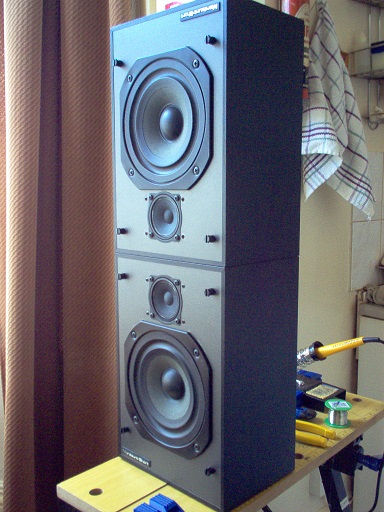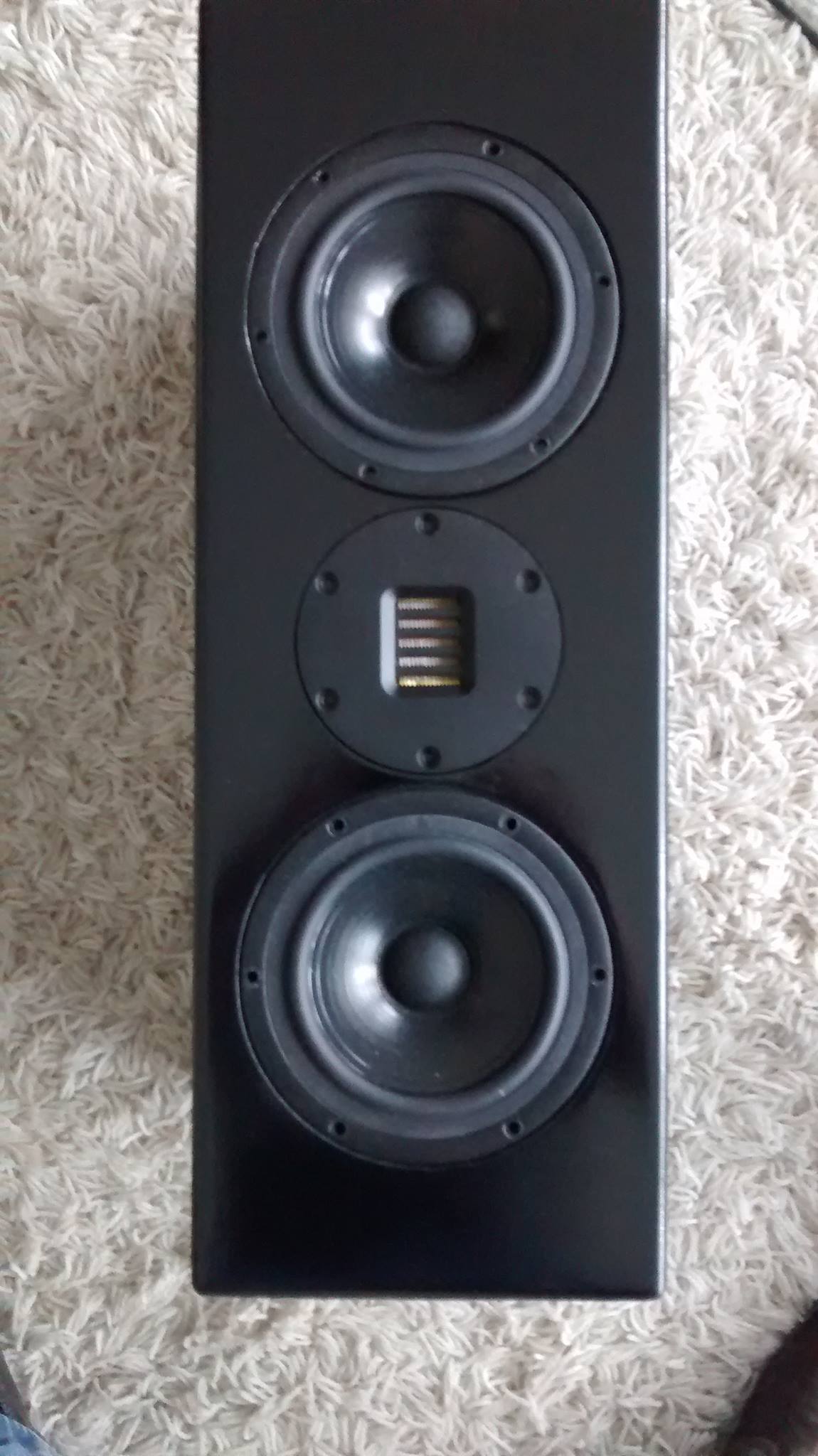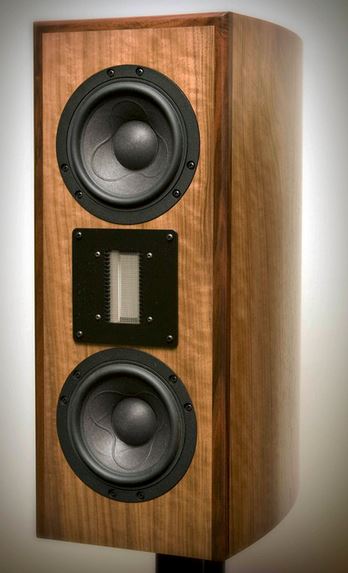Is it possible to use two tweeters and prevent interference pattern when producing stereo output?
Yes, simply put completely different program material in each tweeter and there will be no interference pattern.Is it possible to use two tweeters and prevent interference pattern when producing stereo output?
Is that possible, you mean sending different signals to each channel?Yes, simply put completely different program material in each tweeter and there will be no interference pattern.
No, have one handle lower treble and the other high treble.Is that possible, you mean sending different signals to each channel?
But doesn't that mean we are sending two signals of same frequency which results in interference due to path difference?No, have one handle lower treble and the other high treble.
I believe the advantage is greater power handling or higher sensitivity if wired in parallel without compensation.
Last edited:
I knew this but how did Infinity, for example, got away with multiple tweeters?
(line arrays). Is it that they are all lined-up vertically, close together?.
I would NEVER use multiple tweeters horizontally in a non-PA situation!.
(line arrays). Is it that they are all lined-up vertically, close together?.
I would NEVER use multiple tweeters horizontally in a non-PA situation!.
Are you looking for some benefit from using two?
yes sure i am looking for the benifit from using two, when they are seperated by 45 cm.
45cm, sounds like you have a plan. Do you want them to interfere? What benefits do you see, or what are you trying to do?
Hi,
Nothing good about two tweeters 45cm (18") apart.
It is all bad, in most scenarios I can imagine.
rgds, sreten.
Nothing good about two tweeters 45cm (18") apart.
It is all bad, in most scenarios I can imagine.
rgds, sreten.
There is a line of Sony products that is also doing something like...Advent? I forgot, some old and dead brand. They use a mid-tweeter flanked by a pair of real tweeters. IT's arranged something like a 2.5 way, only instead of the bass being duplicated, it's the tweeter.
The setup must work if they bothered to copy such an old design. A couple of months ago I helped someone here deconstruct the crossover for a pair, you may look it up.
The setup must work if they bothered to copy such an old design. A couple of months ago I helped someone here deconstruct the crossover for a pair, you may look it up.
This old thread may interest you....
http://www.diyaudio.com/forums/multi-way/98488-twin-tweeters-vaf-dc-x-g4.html
http://www.diyaudio.com/forums/multi-way/98488-twin-tweeters-vaf-dc-x-g4.html
It seems strange that noone has encountered a pair of Allison Four 🙄
The brand is rather popular. They were my "introduction" to the hi-fi world, I bought them used in the middle '80s. Nowadays I wouldn't give a penny to such a visibly strange design, but surely they sounded good !
The brand is rather popular. They were my "introduction" to the hi-fi world, I bought them used in the middle '80s. Nowadays I wouldn't give a penny to such a visibly strange design, but surely they sounded good !
There are interference patterns, and then there are interference patterns. Depends on the specific implementation. A couple mounted very close together -yes, you'll measure some differences, but whether you'd hear it is another matter as the precedence effect kicks in. Plenty of decent sounding speakers have been made with twin (or more) tweeters, so I wouldn't rule it out automatically.
No I dont want them to interfere, i was just thinking of how does comb filtering effect if there are two loudspeaker box with its own LF and HF driver seperated by 45 cm.45cm, sounds like you have a plan. Do you want them to interfere? What benefits do you see, or what are you trying to do?
I would suggest to put the second Tweeter on the back of the speaker with an attenuator, so you can add more "air" or less depending on your room/distance to the wall...
The MTTM has an illustrious history, however it is done, because a ribbon can behave essentially like two regular tweters:


The idea is to get the PA-like projection and +6dB efficiency of twin drivers and keep the dispersion cylindrical.

Combing just sounds like off-axis dispersion falloff IMO. That can be improved with a 90 degree flat power BW3 alignment, which is the original D'Appolito idea where lobing is cancelled out by the symettry.
BW3 is more demanding on the drivers, and time alignment becomes another factor. Some drivers play nicely together, some don't. The modelling is best done time-aligned for a +3dB FR bump and aligned phase, and then muck up the time alignment for 90 degrees which is only 2.5 cm at around 3kHz and the bump goes away.
I was listening to something like these with an electronic LR4 filter recently, quite directional but good:

All deep stuff! Maybe even some sort of Entangled State at the root of it. 🙂


The idea is to get the PA-like projection and +6dB efficiency of twin drivers and keep the dispersion cylindrical.
An externally hosted image should be here but it was not working when we last tested it.

Combing just sounds like off-axis dispersion falloff IMO. That can be improved with a 90 degree flat power BW3 alignment, which is the original D'Appolito idea where lobing is cancelled out by the symettry.
BW3 is more demanding on the drivers, and time alignment becomes another factor. Some drivers play nicely together, some don't. The modelling is best done time-aligned for a +3dB FR bump and aligned phase, and then muck up the time alignment for 90 degrees which is only 2.5 cm at around 3kHz and the bump goes away.
I was listening to something like these with an electronic LR4 filter recently, quite directional but good:

All deep stuff! Maybe even some sort of Entangled State at the root of it. 🙂
- Status
- Not open for further replies.
- Home
- Loudspeakers
- Multi-Way
- On the use of two tweeters?
